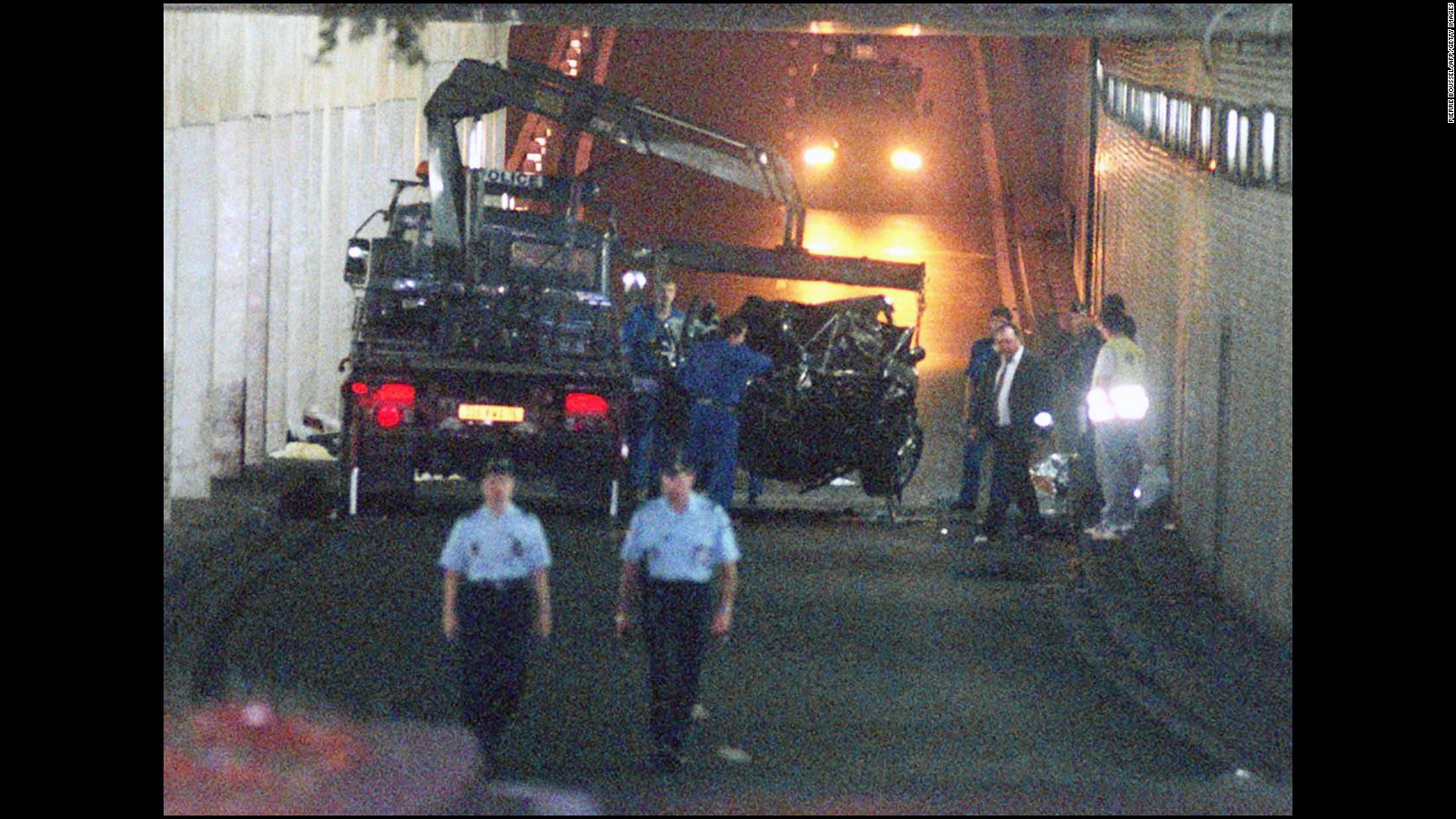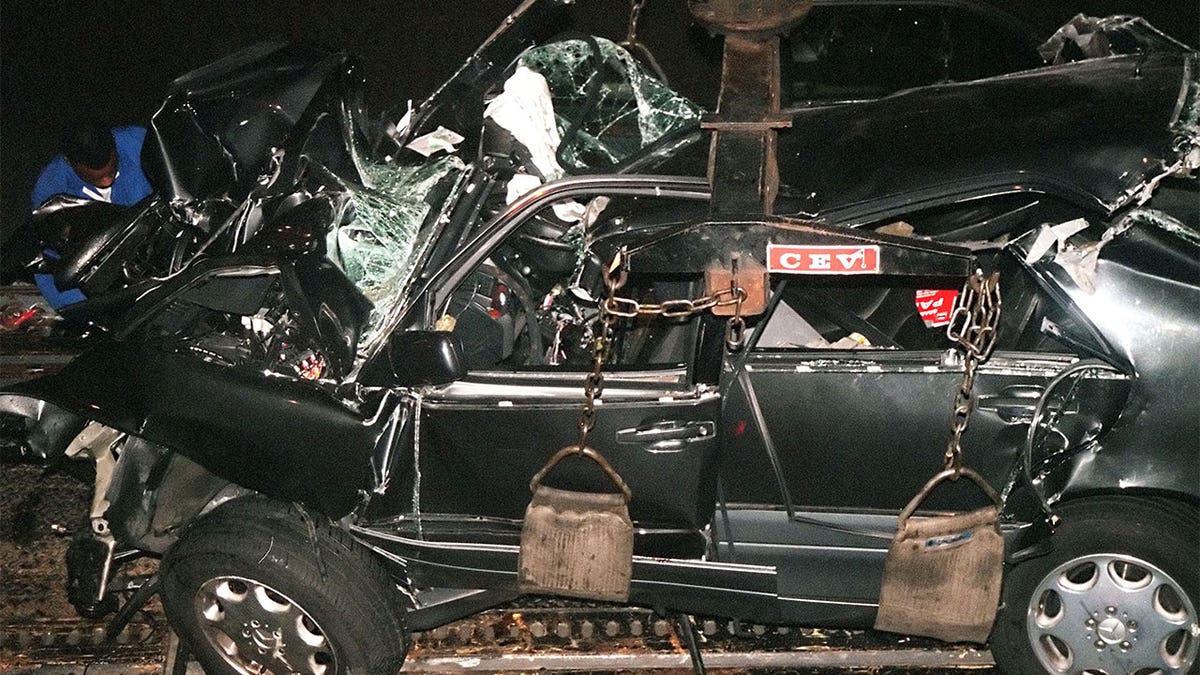Unveiling The Truth: The Photos Of Princess Diana Accident
The tragic story of Princess Diana's accident remains one of the most heart-wrenching events in modern history. The incident that took place on August 31, 1997, continues to resonate globally. Her untimely death shocked millions and left an indelible mark on the world. The photos of Princess Diana's accident have been a subject of immense controversy and ethical debate ever since.
Princess Diana's life was a blend of royal charm, humanitarian efforts, and media scrutiny. Her passing was not just a loss for the British monarchy but for the world at large. The incident in Paris remains one of the most extensively documented accidents in history, with media coverage that was both relentless and invasive.
In this article, we will delve into the events surrounding Princess Diana's accident, analyze the photos that emerged from the scene, and discuss the ethical implications of their publication. This exploration aims to provide a comprehensive understanding of the circumstances and the media's role in shaping public perception.
Read also:Extra Short Leg Jeans For Women In The Uk A Comprehensive Guide To Style And Fashion
Table of Contents
- Biography of Princess Diana
- Overview of Princess Diana's Accident
- Impact of the Photos
- The Role of the Media
- Ethical Considerations
- Details of the Investigation
- Conspiracy Theories Surrounding the Accident
- Princess Diana's Legacy
- The Photos: A Closer Look
- Conclusion
Biography of Princess Diana
Early Life and Marriage
Princess Diana, born Diana Spencer on July 1, 1961, was a member of the British aristocracy. She became the Princess of Wales after marrying Prince Charles on July 29, 1981. Their union was celebrated worldwide, symbolizing the fairy-tale romance often associated with royalty. Diana's life was characterized by her dedication to charitable causes and her role as a mother to Prince William and Prince Harry.
Beyond her royal duties, Diana was a global icon, known for her compassion and efforts in raising awareness about AIDS, landmines, and homelessness. Her humanitarian work earned her the nickname "The People's Princess."
Data and Biodata of Princess Diana
| Full Name | Diana Frances Spencer |
|---|---|
| Date of Birth | July 1, 1961 |
| Place of Birth | Sandringham, Norfolk, England |
| Spouse | Prince Charles, Prince of Wales |
| Children | Prince William and Prince Harry |
Overview of Princess Diana's Accident
On August 31, 1997, Princess Diana was involved in a fatal car accident in the Pont de l'Alma tunnel in Paris. She was traveling with her boyfriend Dodi Fayed and chauffeur Henri Paul, who was driving the Mercedes-Benz S280. The car was being pursued by paparazzi motorcycles, leading to a high-speed chase that tragically ended in a collision with a concrete pillar inside the tunnel.
According to reports, the chauffeur was driving under the influence of alcohol, which contributed to the severity of the accident. Princess Diana, Dodi Fayed, and Henri Paul succumbed to their injuries, while bodyguard Trevor Rees-Jones survived with severe injuries.
Impact of the Photos
Initial Release
The photos of Princess Diana's accident were first published by French magazine Paris Match and later by other international outlets. These images, captured by freelance photographers at the scene, sparked outrage and debate over the ethics of photojournalism. The graphic nature of the photos depicted the tragic aftermath, showing the wreckage and the victims.
Public Reaction
- Global outrage over the invasion of privacy.
- Questions raised about the role of the media in the accident.
- Increased calls for stricter regulations on paparazzi activities.
Many argued that the publication of these photos was unnecessary and exploitative, while others defended the journalists' right to document newsworthy events.
Read also:Jennifer Coolidge In Porn A Detailed Examination And Clarification
The Role of the Media
The media played a pivotal role in the events leading up to Princess Diana's accident. The relentless pursuit by paparazzi is often cited as a contributing factor to the high-speed chase that resulted in the crash. Media outlets faced criticism for prioritizing sensationalism over ethical considerations.
Studies have shown that the pressure to capture exclusive images of celebrities can lead to dangerous behaviors by photographers. This case highlighted the need for better regulation and accountability in the industry.
Ethical Considerations
Privacy and Consent
The ethical debate surrounding the photos of Princess Diana's accident centers on the violation of privacy and the lack of consent. In situations involving death or tragedy, the line between public interest and exploitation becomes blurred. Ethical guidelines in journalism emphasize the importance of respecting human dignity and avoiding harm.
Legal Implications
Following the incident, several countries implemented stricter laws to protect celebrities from intrusive media practices. France, in particular, introduced legislation to address the issue of paparazzi harassment.
Details of the Investigation
An official inquiry into the accident concluded that the chauffeur's intoxication and excessive speed were the primary causes. The investigation also highlighted the role of the paparazzi in creating a hazardous environment. Despite these findings, conspiracy theories persisted, questioning the official narrative.
Conspiracy Theories Surrounding the Accident
Over the years, numerous conspiracy theories have emerged regarding Princess Diana's death. Some suggest that the accident was staged, while others speculate about foul play involving various parties. These theories have been widely debunked, yet they continue to circulate, fueled by misinformation and speculation.
Princess Diana's Legacy
Despite her tragic passing, Princess Diana's legacy endures. Her commitment to humanitarian causes and her compassionate nature have inspired generations. The Diana Award, established in her honor, continues to recognize young leaders making a positive impact in their communities.
The Photos: A Closer Look
The photos of Princess Diana's accident remain a contentious subject. While they serve as a reminder of the dangers of media intrusion, they also highlight the need for responsible journalism. Understanding the context and implications of these images is crucial in preventing similar tragedies in the future.
Conclusion
The photos of Princess Diana's accident are a stark reminder of the consequences of media excess and the importance of ethical journalism. By examining the events surrounding her tragic death, we gain insight into the complexities of celebrity culture and the media's role in shaping public perception.
We invite you to share your thoughts in the comments section below. For more in-depth articles on historical events and their impact, explore our other content. Together, let's foster a culture of respect and responsibility in media and beyond.
References:
- https://www.bbc.com/news/events/diana
- https://www.history.com/topics/british-history/princess-diana
- https://www.theguardian.com/uk/2007/aug/31/princessdiana.media


